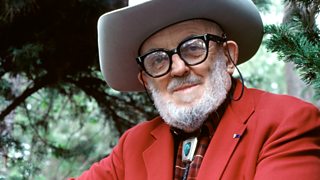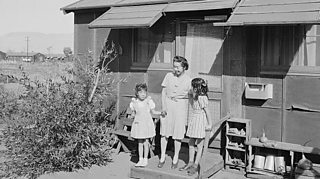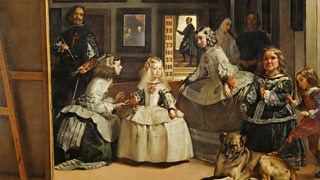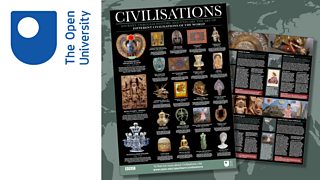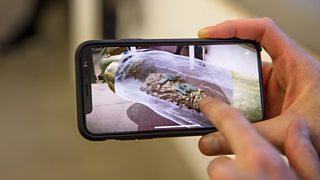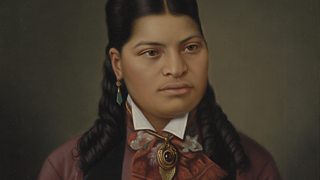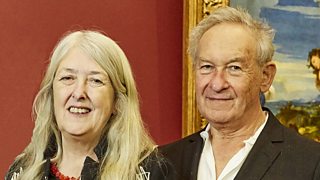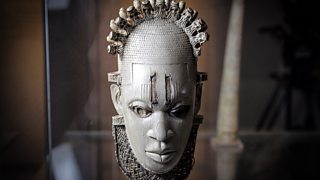Ansel Adams: Exploring the inner lens of the imagination
15 March 2018
Ansel Adams' images celebrate the wonder of the American West. In Civilisations: Picturing Paradise Simon Schama praises him for sharing the "luminous majesty" of the land with the world. While landscape photography and conservation were his main focus, during World War Two Adams turned his lens towards the treatment of a specific ethnic group.
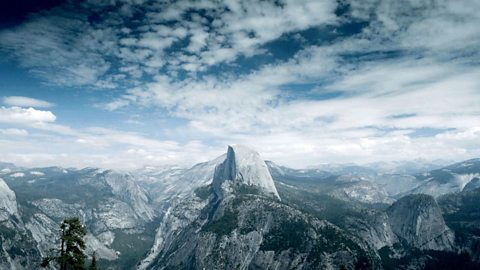
Ansel Adams
Simon Schama on visionary landscape photographer Ansel Adams
"It was an epiphany, like falling in love" is how Simon Schama describes Ansel Adams' first visit to Yosemite National Park in 1916.
It was here in California’s Sierra Nevada mountains some 11 years later that Adams created what Schama thinks is "one of the greatest masterpieces of American or any other art" – Monolith, the Face of Half Dome.
To capture the 8,800 feet of towering granite in 1927, Ansel Adams clambered his way through 4,000 feet of deep snow to reach an outcropping known as the Diving Board.
There, he set up his camera and as the light failed, Adams had a moment of inspiration. By using a dark red filter he could turn the sky near black and create an extreme contrast between the snow and the mountain.
The result was what Adams called a visualisation. It was, Schama says, "not what his eye, but the inner lens of his imagination, could see."
Ansel Adams did not want to keep the beauty of Yosemite to himself, he saw it as a place for everyone – and place that needed to be protected.
In 1960 he published This is the American Earth, which is seen as one of the essential books in the reawakening of the conservation movement of the 1960s and 70s.
"In his later years", Schama says, "he became a kind of patriarch of environmentalism and every so often he would put down his camera and even leave his beloved Yosemite to go and try to persuade presidents to his point of view.
But throughout it all he remained steadfast to his core belief that his job in life was to give visual expression to that silken cord tying together the fate of man with the fate of the earth."
-
![]()
Civilisations Podcast
Environmental writer Kenneth Brower shares his memories of the celebrated American photographer Ansel Adams

One of the greatest masterpieces of American or any other art.Simon Schama on Monolith, the Face of Half Dome
And ultimately Adams' images would escape the confines of this planet altogether.
In 1977 NASA launched Voyager spacecraft on a mission to explore outer space. On board was The Golden Record, which contained pictures depicting human civilisation and the natural world.
Two images by Ansel Adams were among the 115 selected, The Tetons and the Snake River and Golden Gate Bridge.
For Schama these are a fine representation of our species to any other civilisation who might come across them in the future. "If they weren’t the whole truth about our civilisation then his photographs weren’t a beautiful lie either. Like all landscape art they sprang from the eye, the mind, and the invention of the human heart."
They sprang from the eye, the mind, and the invention of the human heart.Simon Schama on Ansel Adams' photographs
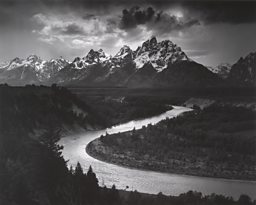
But Ansel Adams was also concerned with the plight of people, as his wartime photography shows.

More than 100,000 Americans of Japanese ancestry and Japanese citizens were incarcertated during World War Two.
Internment affected people Ansel Adams knew personally. Harry Oye, a longtime employee of his parents who was in ill-health, was picked up by the authorities and sent to a hospital halfway across the country.
Wartime security fears were not sufficient justification according to some of those detained.
Joyce Okazaki was seven years old when she and her family were forced to move from Los Angeles to the Manzanar War Relocation Centrin in 1942. "We really were in a concentration camp," Okazaki told NBC News, "We were imprisoned. We didn't have due process... Don't send people to prison just because of how they look."
Not that everyone thinks Manzanar should be described in such a way. A plaque which was placed on the site, which read in part 'May the injustices and humiliation suffered here as a result of hysteria of racism and economic exploitation never emerge again' was shot at and the word 'racism' chipped away with an axe.
Manzanar was located in the desert, forcing internees to contend with massive fluctuations in temperature, from as high as 43 degrees celsius in summer to sub-zero in winter.
Internees were crowded into basically furnished barracks. Even the toilets offered little privacy. Rosie Kakuuchi remembers "one of the hardest things to endure was the communal latrines, with no partitions; and showers with no stalls."
There were also incidents of violence within the camp. Two people were killed and more were injured during the 'Manzanar Riot' of 1942.
Manzanar, one of ten camps across the US, was run by Adams' friend Ralph Merritt and he was granted access to the camp.
At first glance, especially in comparison to others who took pictures of interned such as Dorothea Lange, Adams' photographs appear to show Manzanar positively. The obvious signs of a prison – guards, towers and barbed wire – are not shown.
Despite the relative serenity of Adams' images, he was making a political point about Manzanar too.
When he came to publish the photos in 1943, the title – Born Free and Equal – and description – Photographs of the loyal Japanese-Americans – was clearly a pointed one.
These people, despite the colour of their skin, were as patriotic as any other citizen and their allegiance should not be called into question.
He later reflected that, "The purpose of my work was to show how these people, suffering under a great injustice, and loss of property, businesses and professions, had overcome the sense of defeat and despair by building for themselves a vital community in an arid (but magnificent) environment."
Japanese-American suspicions
On December 7, 1941 Japan launched a surprise attack on US forces at Pearl Harbour, Hawaii. But a declaration of war against Japan was not the only result.
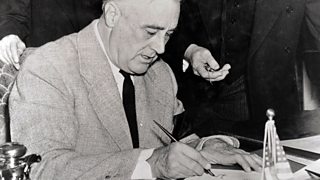
I hereby authorize... to prescribe military areas... the right of any person to enter, remain in, or leave shall be subject to whatever restrictions the Secretary of War or the appropriate Military Commander may impose in his discretion.Executive order 9066
Due to concerns that Japanese-Americans would act as spies for the Japanese military President Roosevelt issued an executive order, 9066.
In effect, Japanese-Americans were removed from the Pacific Military zone.

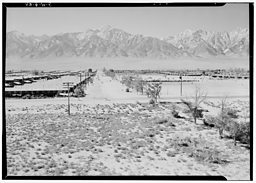
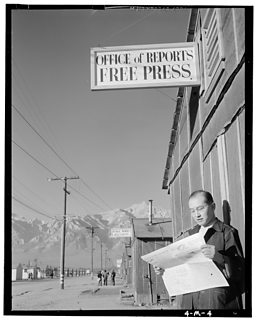
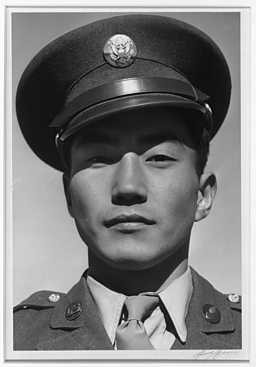
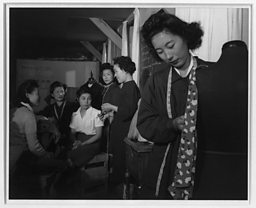
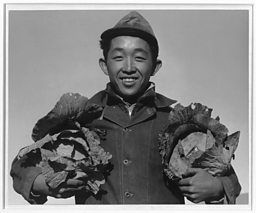
-
![]()
Library of Congress: Ansel Adams at Manzanar
Photographs of Japanese-American Internment taken in 1942
More from Civilisations
-
![]()
Hue knew? Five surprising facts about colour
Colour is a complicated and, at times, controversial topic.
-
![]()
Explore masterpieces of European painting
Five of the most significant paintings in the history of Western art.
-
![]()
Order a free poster from the Open University
OpenLearn, the OU’s home of free learning, helps you explore the art of different civilisations of the world.
-
![]()
Digital innovations
Explore artefacts using the augmented Reality (AR) app and 360 degrees videos, plus storytelling collaborations with UK museums and galleries.
-
![]()
The Czech and the Chieftains
How the Māori community turned the tables on colonial art.
-
![]()
9 fascinating facts from The Civilisations Podcast
Viv Jones' audio companion to the BBC Two series is taking us on some intriguing tangents.
-
![]()
The Inside Story
Mary Beard and Simon Schama reveal the inside story of writing and presenting the BBC Two series Civilisations.
-
![]()
Civilisations: Box set
Watch all nine episodes of the series on BBC iPlayer.
